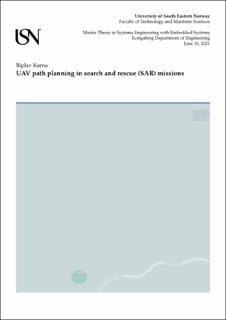| dc.description.abstract | Unmanned Aerial Vehicle (UAV) and Search And Rescue (SAR) missions are hot topics
of research these days. UAVs come in a wide range with different capabilities. Due to
their applicability, they are being used for trivial as well as complex missions. The frequent
mishaps and disasters have brought SAR into the limelight. SAR missions have
unfavorable environments and short response times. SAR operations utilize various
resources. Among them, UAV is one of the key resources, and it plays a vital role in
such missions. This thesis explores the path planning of UAVs in SAR missions. Some
of the area coverage algorithms have been considered and simulated in SITL with PX4
flight software stack in Gazebo. Quadcopter has been considered for the area coverage
algorithms. Post-flight analysis of logs has been presented. Comparison between these
algorithms has been deduced. Rapidly exploring Random Trees (RRT) has been considered
as a target reaching algorithm in the SAR mission. RRT has been implemented
in a 3D environment, modeling UAV as a 3D figure. Biased and unbiased flavors of
Rapidly exploring Random Trees (RRT) have been implemented, and their comparison
is discussed. | en_US |
